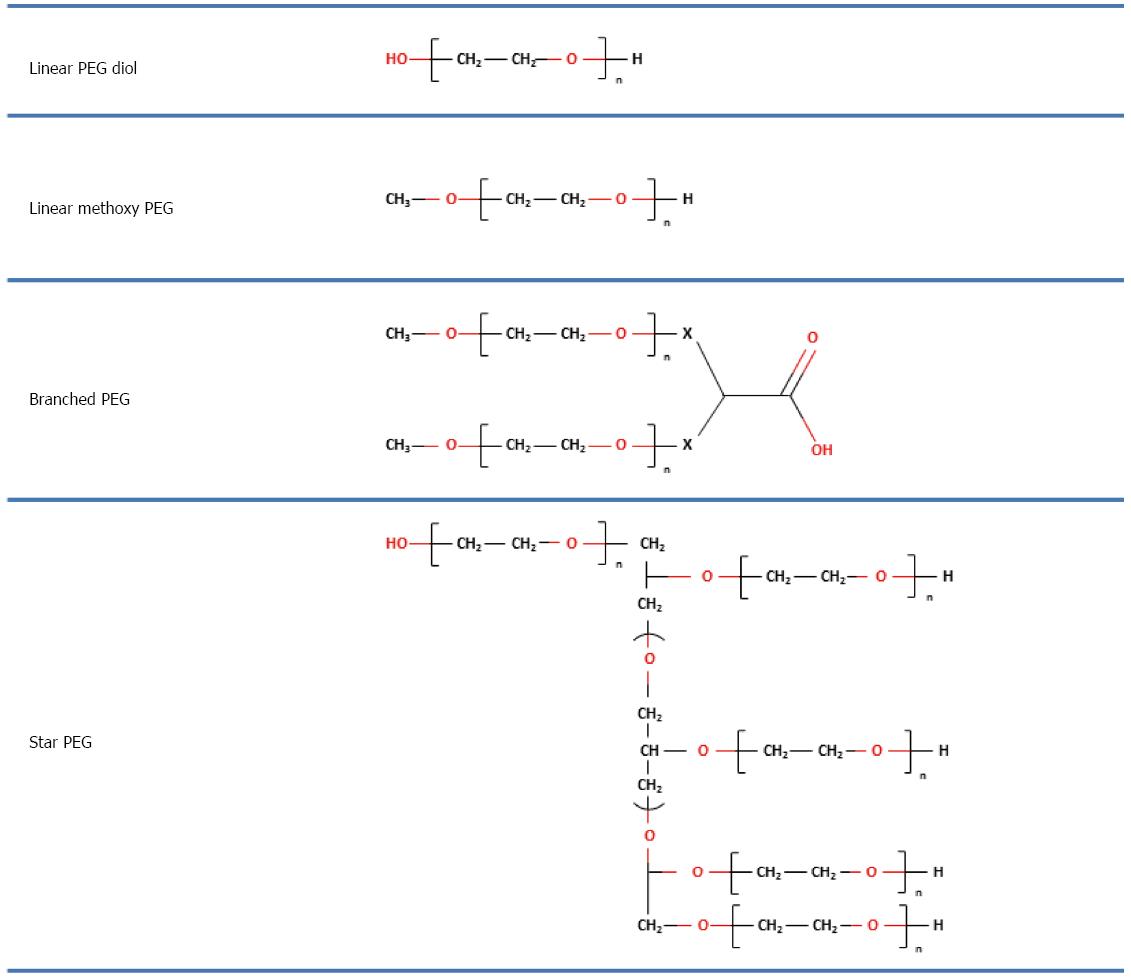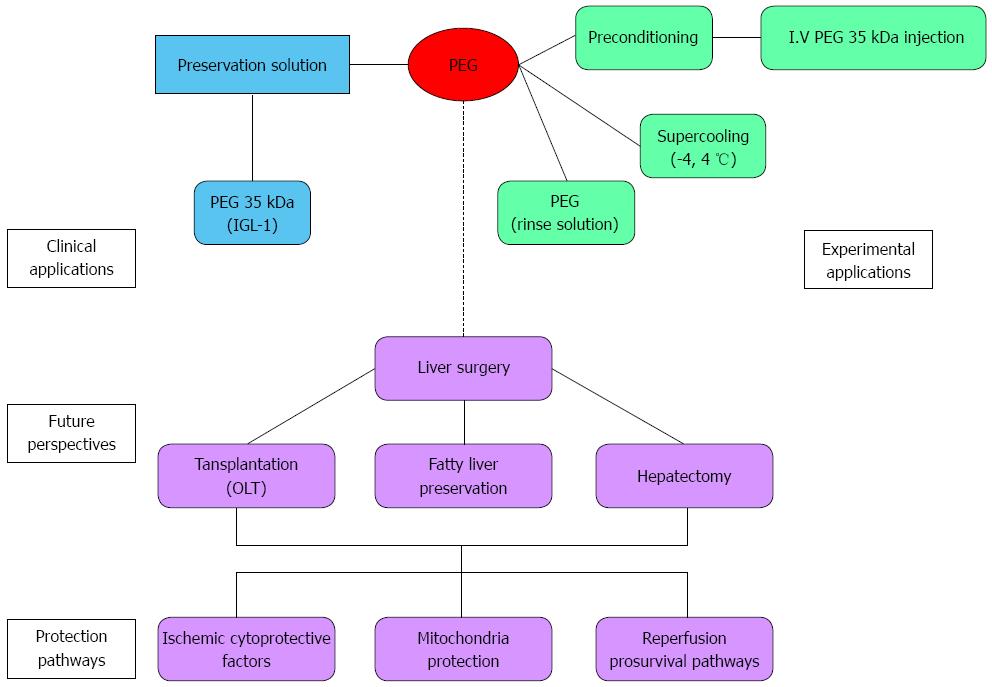Copyright
©The Author(s) 2016.
World J Gastroenterol. Jul 28, 2016; 22(28): 6501-6508
Published online Jul 28, 2016. doi: 10.3748/wjg.v22.i28.6501
Published online Jul 28, 2016. doi: 10.3748/wjg.v22.i28.6501
Figure 1 Schematic composition of linear, branched and star polyethylene glycols.
Polyethylene glycols (PEGs) are synthesized by a process of linking repeating units of ethylene glycol. The reaction gives products with one or two end chain hydroxyl groups termed methoxy-PEG or diol-PEG, respectively. Then, the linear PEG with branches at irregular intervals along the polymer chain forms branched PEGs. Star-shaped PEGs are the simplest class of branched PEGs with a general structure consisting of several (more than three) linear chains connected to a central core.
Figure 2 PEG35 preserves liver graft function.
Confocal microscopy images showing green fluorescence of rhodamine 123 cell viability marker. Liver grafts were better preserved when they were rinsed with a solution containing PEG35 (A) rather than Ringer lactate solution (B).
Figure 3 State of the art and future perspectives of polyethylene glycols as effective tool for limiting hepatic ischemia-reperfusion injury.
Currently, the clinical applications of polyethylene glycols (PEGs) focus on their use as oncotic agents in IGL-1 solution for liver transplantation (in blue). Recent experimental investigations confirm the value of PEG35 for “supercooling” strategies combined with machine perfusion, as well as its use as a component in rinse solution for liver graft washout. Intravenous PEG35 treatment has also been shown to induce liver protection against cold and warm ischemia-reperfusion injury (IRI) (in green). Future clinical applications should be investigated (in violet). PEG protection mechanisms are characterized by a prevention of mitochondrial damage and by the promotion of several cyto-protective factors during IRI (in violet).
- Citation: Pasut G, Panisello A, Folch-Puy E, Lopez A, Castro-Benítez C, Calvo M, Carbonell T, García-Gil A, Adam R, Roselló-Catafau J. Polyethylene glycols: An effective strategy for limiting liver ischemia reperfusion injury. World J Gastroenterol 2016; 22(28): 6501-6508
- URL: https://www.wjgnet.com/1007-9327/full/v22/i28/6501.htm
- DOI: https://dx.doi.org/10.3748/wjg.v22.i28.6501















